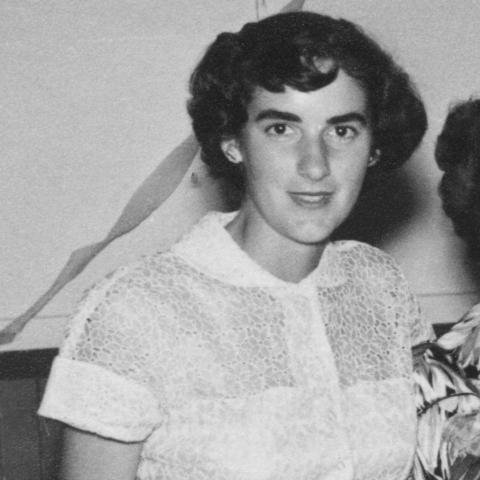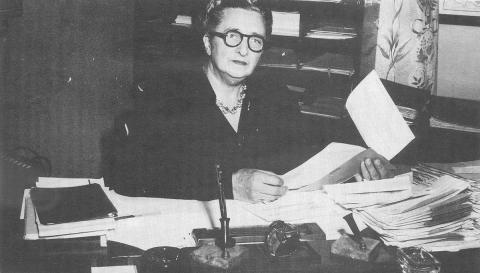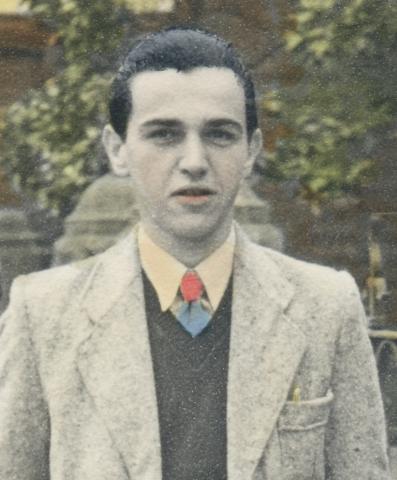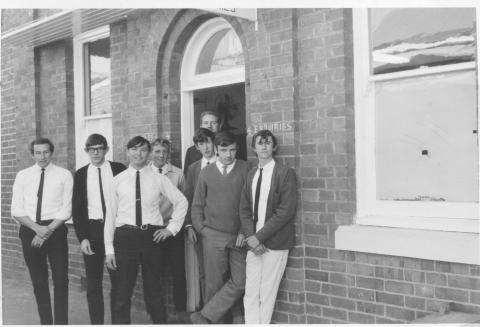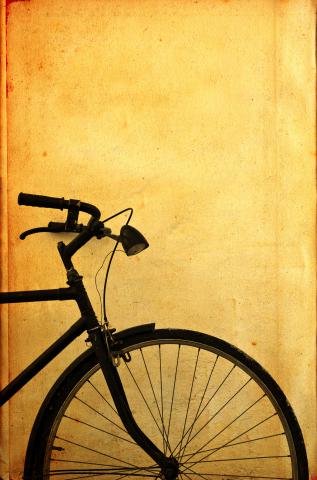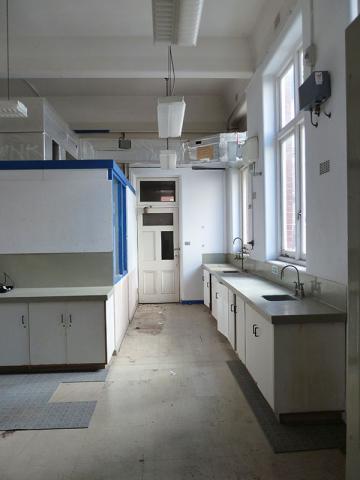Sights
Verity Cripps - Doing the Accounts
I started in the Accounts Section which was a long sort of, seemed to me, grimy wooden building at the back of 57 Murray Street. There were a lot of us, we did accounts for people who were in country hospitals. The accounts were for, say, four pounds or three pounds and I often wondered if the people could possibly afford to pay them because a lot of the country hospitals, the people attending them would’ve been quite poor. It used to worry me a bit that these people were presented with these accounts for what now is a very small amount but then I started work at thirty-three and sixpence a week [about one and a half pounds] and I was considered very well paid at that period.
Robert Gesmundo - Dr Stang
Dr Stang was a card and a half. Her birthday was the same day as mine, the 1st of June, so she’d always have a morning tea and she would always invite me and make me smoke a cigar because she loved the smell of cigars and whether I was puffing, or turning green or whatever, I had to puff this cigar and she would remind me that Marilyn Monroe’s birthday was also on the 1st of June and she used to drive a black Ford Consul and I only went once for a drive with her around Forrest Place and Wellington Street and I swore black and blue I would never drive with her again because she would just flop her hand out the window for signals and doesn’t matter who else was there, she was turning, and that was it. But she was a wonderful lady with a fantastic sense of humour, a loud voice and always very enjoyable to be with. She was great.
Robert Gesmundo - Chewing Tobacco for Aborigines
I liaised with the Department of Native Welfare, as it was called then, purely on material. For example, if they were doing a survey, being a nutritional survey or research for a medical survey with a lot of Aborigines involved, then the Department of Native Welfare would supply blocks of chewing tobacco which were about an inch and a half square, by about a quarter of an inch thick and they came in huge cartons. We made sure that we had enough of that because the Aboriginal people loved the taste of it. It was a way to sort of break the ice or get them on side so it was very successful in that role as far as I believe.
John Douglas - Honour and Ethics
(John Douglas began work as a Records clerk at 57 Murray Street in 1966)
There was a lot of honour and you know, you respected people. In those days, in the public service there was a very strict code of ethics and you just didn’t deviate from those ethics. Whatever you found out at work, you just kept to yourself; you’d never tell anyone any secrets or whatever and the same with the people – it doesn’t matter who your boss was or what government was in power, whether it was Liberal, Labor or National or whatever, you just gave them your utmost. There was no such thing as ‘them’ and ‘us’ - that was your job, which is certainly not the case today.
Brian Jackson - The Sink
Yes, I can remember the sink but I don’t know what it was used for. I don’t think I ever saw it being used. I’ve been trying to think about that. I seem to think that they used to wash something there, it was like linen but I can’t remember exactly. I really don’t know. I can remember the sink being there because it was a big one, it wasn’t just a normal household sink, it was a deep sink but I just can’t remember. Things like towels, I think, hand towels, sort of – I think I remember seeing them being washed there.
Brian Jackson - The Pushbike
There was only one bike and that belonged to the Public Health Department. That was stored out the back of the building, just under a verandah. It wasn’t locked up or anything. It was just stored under a verandah. The bike itself was black but it had one of the bars going down from the seat down to the gear wheel was yellow indicating that it was a government bike … you weren’t allowed to take it home but if you could work out a way where you could, well, you could. I used to cover up the yellow bar with tape, a different colour, a black colour, and sometimes I’d take the bike home for the weekend and bring it back on Monday; it saved a tram fare.
Brian Jackson - Buying Rabbits
BRIAN JACKSON – former 1940s mail delivery boy at 57 Murray Street
One of my jobs was going into the city to the pet shops and buying rabbits. I’d usually buy two at a time from each pet shop. There were pet shops in London Court and Plaza Arcade. I wasn’t allowed to tell the proprietor of the pet shop why I was buying the rabbits, I never did get asked, but I was told that I’m not allowed to tell them (laughs) so I’d do this occasionally, probably once every two months or something. I’d go around and buy six rabbits, two from each place so that they didn’t know why I wanted to get six and I’d take them back to Mr Drummond [Laboratory Assistant]. I’m not sure what he used them for but I think they were … well, yes, I was told they were used to test to see if women were pregnant
Brian Devine - A Lovely Building
All I know is that it was a wonderful building to work in. It was a lovely building, it was a great building. It had a great spirit in my view. Public Health in Murray Street – it had a soul, it meant something to me and all the people there in my view. It was nice, you didn’t feel out of place, it was just a nice feeling and you got to know everybody and you know, you weren’t ignored in a sense and I think they respected you and you respected them, you certainly respected your boss, there was no doubt about that … I suppose the work ethic and the workforce then, the way that it just went nice and smoothly, and everybody was pretty good. You were there, you worked, you didn’t certainly bludge. It was good, a good workforce, you know. We were on the go, I mean, we’d be out at lunch, go down playing billiards and come back at lunch-time and we were jumping around all over the place. We were young and enthusiastic - it was all good fun.
Bob Crowe - Tarquin's Top Hats
Another side of life in the public service. It’s 1953 and here is 57 Murray Street’s dazzling in-house dancing group known as Tarquin’s Top Hats – all typists – preparing for their end of year ball. Clerical worker Dorothy Tarquin, their coordinator, is on the left. Another workmate Colin Waldon made the ladies’ top hats and wrist bands from cardboard. He also made their batons which had table tennis balls painted red stuck on the end. Mr Waldon, who later helped create the Health Education Council of WA, hand coloured this photo.
Bob Crowe - Lost Treasures
This original register survived the challenges of time and is stored in the State Records Office.
BOB CROWE
[The space in the basement at 57 Murray was needed and] An anechoic chamber was set up to do various sound testing down there so they had to clear it out and pretty well all the records went into three skips. I remember at the time being just a bit slightly appalled at it but I remember the Chief Clerk did say that he had had historical people around and they’d been through it and picked out a few bits but nevertheless, there were all these leather bound record books, account books, which went into the skip – all sorts of things. I think that’s a terrible shame, they should’ve just been parked in a shed somewhere and stored until somebody could assess it properly. You never get these things back and having taken an interest in restoring old books since, I’m really truly appalled when I look back.


